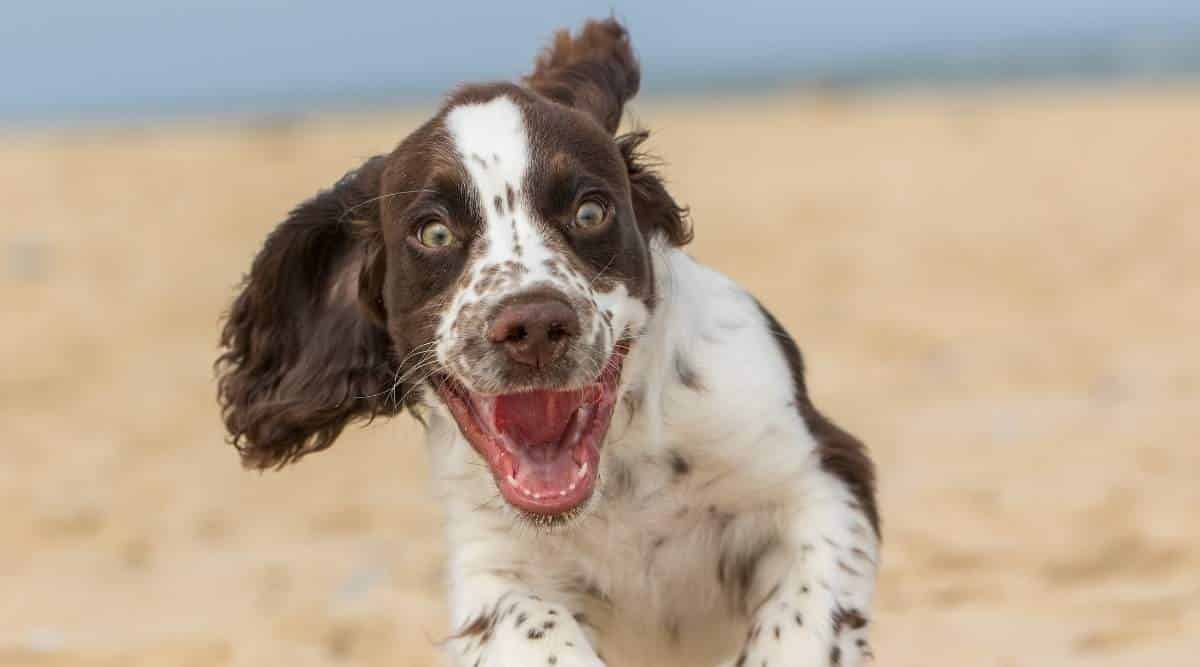Japanese Dog Breeds: 13 Historical Breeds From Japan
When you purchase through links on our site, we may earn a commission. Here’s how it works.
Japan is famously known for its yummy Sushi and its magnificent Cherry Blossom trees to name just a few, however, Japan isn’t that well known for its dog breeds. With the exception of a few, Japanese dogs rarely make it into the top 50 breeds of any kennel club, but in this article, we are going to discover that they are some of the most gorgeous, loyal and protective dogs on the planet, and very underrated.
Table of Contents
Many Japanese dogs have the word ‘Inu’ and ‘Ken’ added onto the end of their name, which simply means dog in Japanese, and they are often used interchangeably. There are 6 official Japanese Spitz breeds, the Akita, Shiba Inu, Kai Ken, Shikoku, Hokkaido and the Kishu Ken, who are the most popular. There are 7 other non-spitz breeds that we will also look at.
Many of Japan’s dog breeds look quite similar, simply because they are hunting dogs that came from certain precincts, and they are inherently protective of their estate and family. So, let’s take a closer look at 13 of the most popular, and rare, Japenese dog breeds.
Japanese Chin

This flat face little guy is the shortest on the list, but with his feisty personality, he certainly makes a big impression. He is often described as being more like a feline than a canine, and you will often find him climbing to the higher levels in the room, such as tables or even shelves. He is described as graceful and charming, and it is easy to see why he was favored by Japanese Royalty. He is a very well-mannered dog who loves everyone he meets!
The Japanese Chin has the classic look of the small Asian breeds. His eyes are spaced far apart, with a wide smile and flat face, and whilst many people think this is a cute look (and it is!), it does cause him to suffer from Brachycephalic syndrome, which is problematic and very dangerous to his health. He will measure anywhere between 8 and 11 inches in height, and he will weigh anywhere between 7 and 11 pounds in weight.
Akita
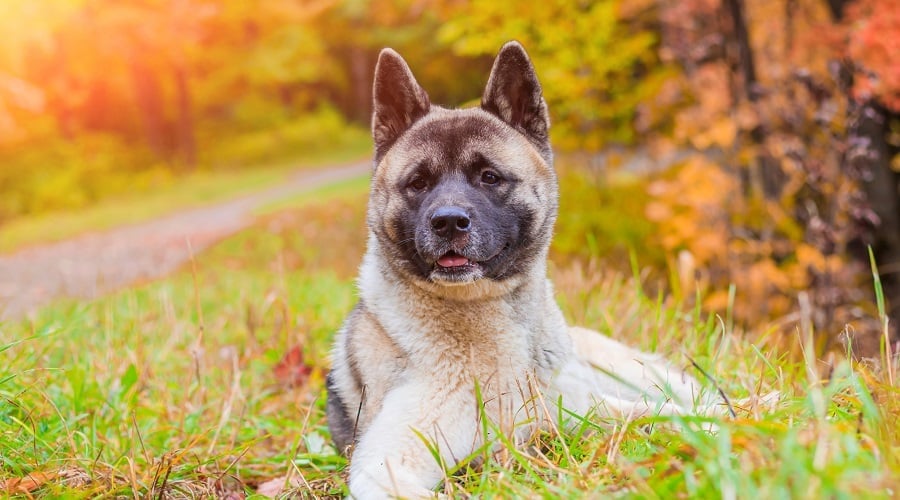
The Akita is often separated into 2 types (and in some parts of the world they are recognized as such), the American and the Japanese, however the AKC only recognize him as one, the Akita Inu. There are two distinct looks, however, and the supposed American Akita is squarer and stockier in stature, and the Japanese look leaner and more Spitz like.
He was originally bred to protect the Japanese Royalty, as well as to hunt wild boar and black bears, and he is a very powerful canine. The Akita Inu’s most distinctive feature is his curly Catherine wheel tail, and he comes in a wide variety of colors and markings. The Akita Inu measures between 24 and 28 inches from paw to shoulder and he will weigh between 70 and 130 pounds in weight, so this big boy is not suited to apartment living.
He originates from northern Japan, and he is a symbol of happiness, good health and long-life, and in Japan he is celebrated as the most loyal dog a master could have. He is described as courageous, dignified and profoundly loyal, and he takes his role as family protector seriously, but he is a silly goofball with his family. The most famous dog in Japan was an Akita named Hachiko, who, after his master’s sudden passing, waited at the same train station every day for nine years for his master to come home, until his own death. He also makes an interesting parent breed mix.
Shiba Inu
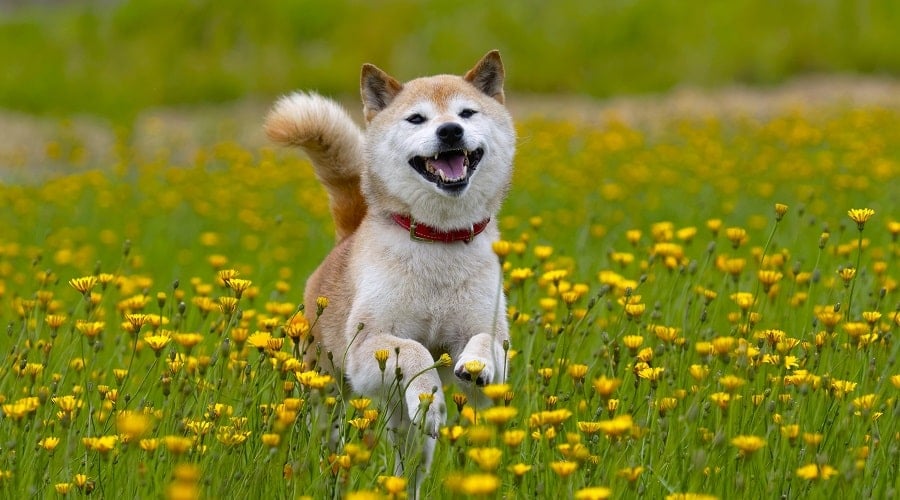
The Shiba Inu measures between 13 ½ and 16 ½ inches in height, and he weighs between 17 and 23 pounds. His fur is rich orange in color with a white underbelly, and the same distinctive curly tail. With his small triangular erect ears and fire-colored fur he looks a lot like a fox. These guys are increasing in popularity, and we can see why, check out the ‘Shiba Inu Daily’ Instagram account for your daily dose for all things Shiba.
In 2019 the Shiba is the most popular breed in his native land, but in America, he is recognized as the 44th most popular dog breed. He was first bred to be a hunting dog, but he is now commonly found tucked up in the arms of his master and family rather than out hunting for his master’s next meal.
He is a very intelligent dog, but one who has the attention span of a goldfish, so expect him to be quite difficult to train. He is also known to be possessive over his toys and food, although this can be managed with strict training, but just be sure to keep an eye on him around other dogs and small children.
Japanese Spitz
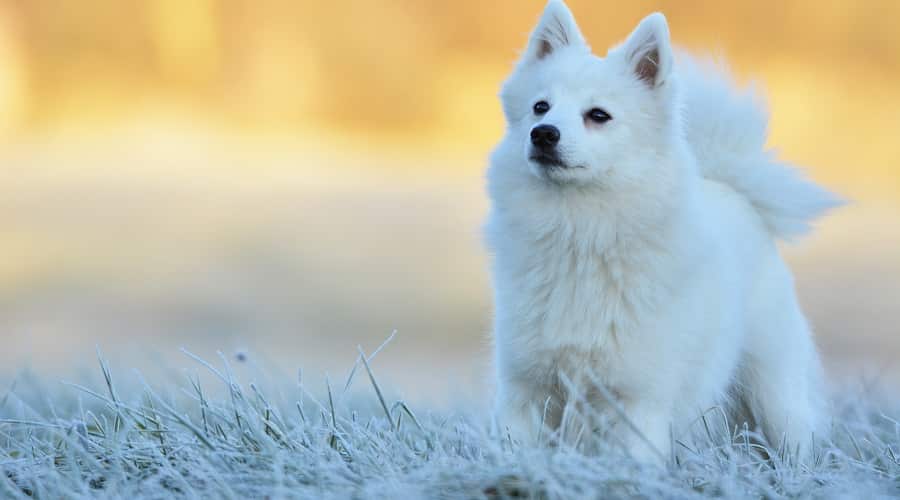
The Japanese Spitz is one of the newer Japanese breeds on this list, and he is a descendant of the German Spitz having been brought over to Japan in the early 20th Century. He is a tiny marshmallow fluffball, or ‘ground cloud’ as some people call him, who measures between 12 to 15 inches in height, and he weighs 10 to 15 pounds in weight. His white fluff is quite high maintenance, and he sheds a lot, so expect a sheen of mallow across your furniture. He has the typical pointy triangular Spitz ears, and a narrow muzzle, with intensely dark eyes.
He is described as loyal and very smart, who loves nothing more than to spend his whole day with his human, so he needs to be placed with a family that can guarantee to be with him for most of the day. This smiley canine clown will fill your day with laughter and fun, and he makes a great companion dog, so there really is no excuse to leave him at all!
He is great with children and other dogs and he makes quite the useful watchdog with his piercing bark, and whilst he is not anywhere near as big as some of the other Japanese dogs on this list, his bark makes him quite the deterrent!
Tosa Inu
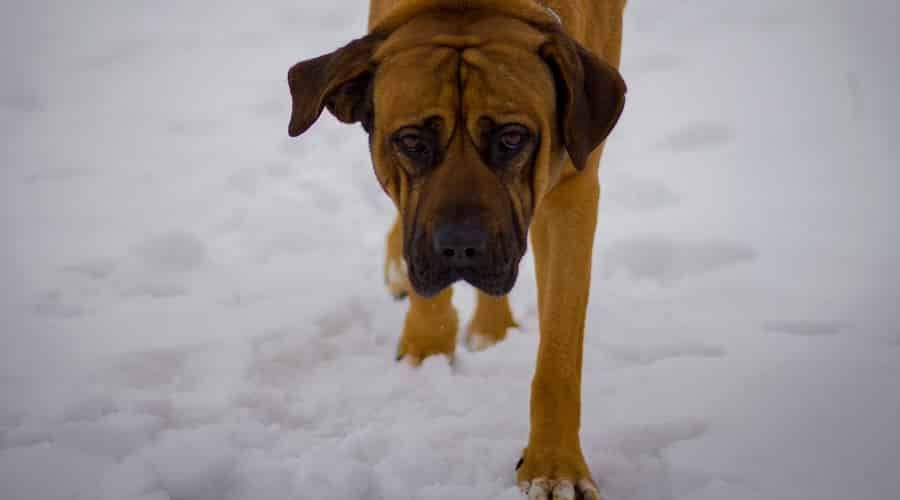
Here we have the biggest Japanese canine who is often mistaken for a mastiff mix, and weighs anywhere between 100 and 200 pounds in weight, and measures a minimum of 21 ½ inches in height, but being bred outside of Japan for his sheer size he is often found to be bigger than this. This colossal guy is thick, muscular and seriously powerful, so you wouldn’t want to get on the wrong side of him, but he is also a sensitive sweet boy with his family. He has a wide neck, deep chest, and he has large dropdown ears, quite opposite to most Japanese breeds.
He is also known as the Japanese Mastiff, and he has played a big part in Japan’s long history of dog fighting. He was bred with the former Japanese fighting champion, the Shikoku Inu, and other larger breeds such as Bulldogs, Mastiffs and Great Danes, to create a more powerful canine fighter. The Tosa Inu finds himself on many of the banned breed lists in countries across the world, so if you are thinking about getting one of these guys then be sure to check out your local laws. With that being said, in the family home he is a docile and peaceful dog, who is used as a watchdog and family companion. To see just how sweet and suited to family life he really is, check out Danny the Tosa’s Instagram page.
Japanese Terrier
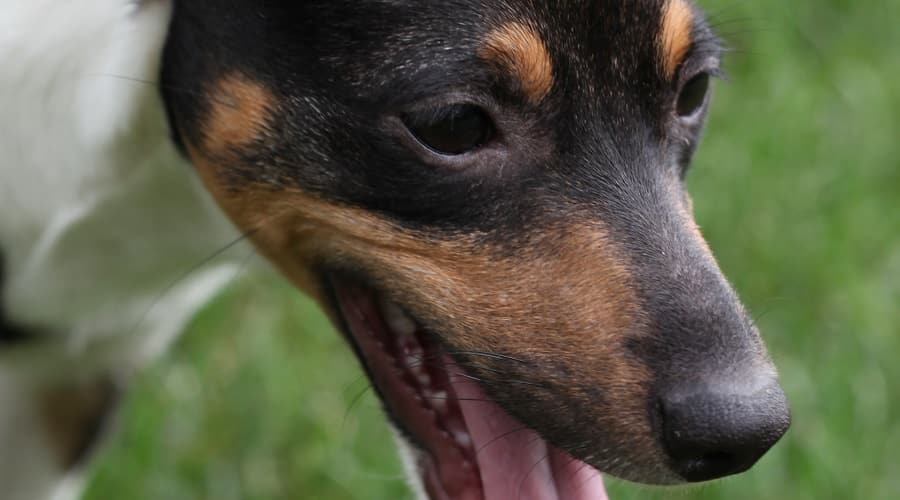
Also known as the Nippon Terrier, this guy is very rare, even in his native country, so it’s very unlikely that you have ever met one. He measures 8 to 13 inches tall, and weighs between 5 to 9 pounds, which makes him the lightest dog on this list, so if you are after a handbag pup then this might be the guy for you. His body is white with his head and half of his neck being black and dark brown. He is slender and you can often see his ribcage, with his tail hanging between his legs.
The Japanese Terrier is another of the newest breeds, with his ancestors, the Fox Terrier of England and the Pointer of Germany, believed to have been brought to Japan in the 17th Century. From here he was bred to be much smaller in size, and despite his Terrier name he was only bred to be a companion dog, never to hunt.
Shikoku Inu
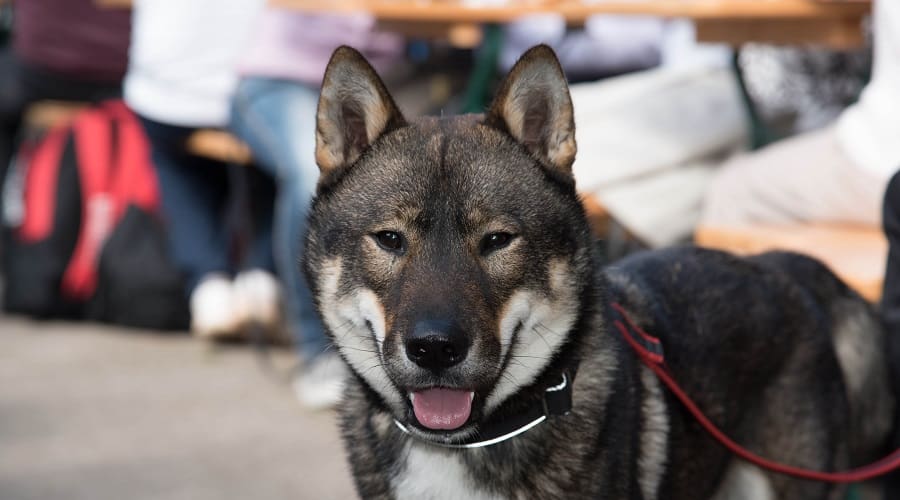
The Shikoku Inu is another Japanese Spitz dog who originates from the island of Shikoku, where he hunted wild boar, and he is the original Japanese fighting dog. This guy is also known as the Japanese Wolfdog, because he has the typical Spitz stature, but with the head of a Wolf. He has a thick coat that comes in three colors; black sesame, red sesame and white, and pointy triangular ears. He also has the distinctive curly tail like the Akita. He measures 17 to 22 inches and weighs 35 to 55 pounds.
He was often kept outside to ensure that he maintained his primitive hunting skills, but now he is often found on the sofas of his family. Despite his need for snuggles, he is a very outdoorsy and active dog who needs to be placed in a large home with access to an even larger enclosed yard, otherwise, he is known to get cabin fever and become quite destructive. If this is something that you can offer him, then he is a loving and sweet dog who will be a very rewarding companion indeed. Overall, he is described as energetic, alert and enthusiastic.
Hokkaido Inu
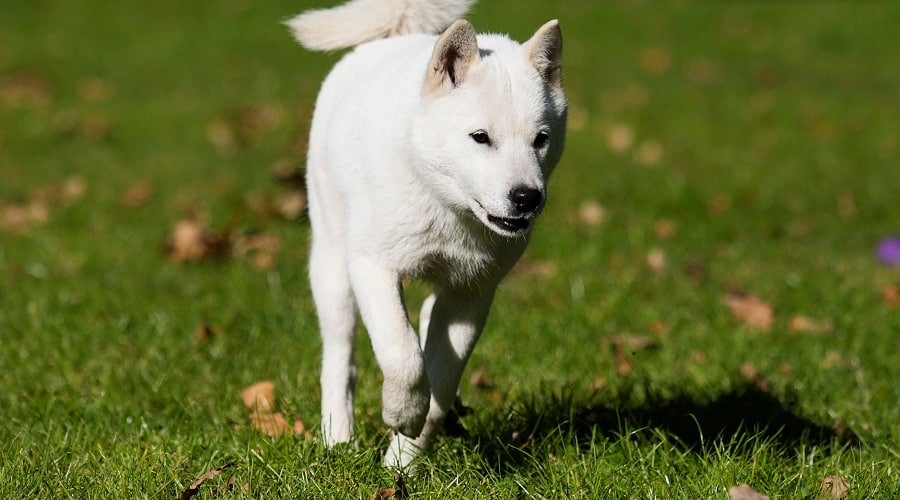
The Hokkaido Inu is described as dignified, alert and devoted who makes a wonderful family companion. He is intelligent and he is one of the best problem solvers around, which is one of the many endearing qualities found on his canine C.V. For this reason, he likes to be busy with jobs or games, so don’t live him idle for too long, otherwise, he will make you, or your furniture, pay for it with destructive behaviors. He is also quite wary of strangers, so don’t expect him to be everyone’s best friend, but he is very affectionate with his family.
He has one of the thickest coats on this list, so if you don’t like a dog that sheds, then this guy should be last on your list of Japanese dogs. White is the most common coat color, but he is often found sporting black, brindle, sesame, red and wolf grey. He also sports the smaller triangular ears and the curly tail. He measures between 18 to 20 inches from paw to shoulder, and he weighs 44 to 66 pounds.
Ryukyu Inu
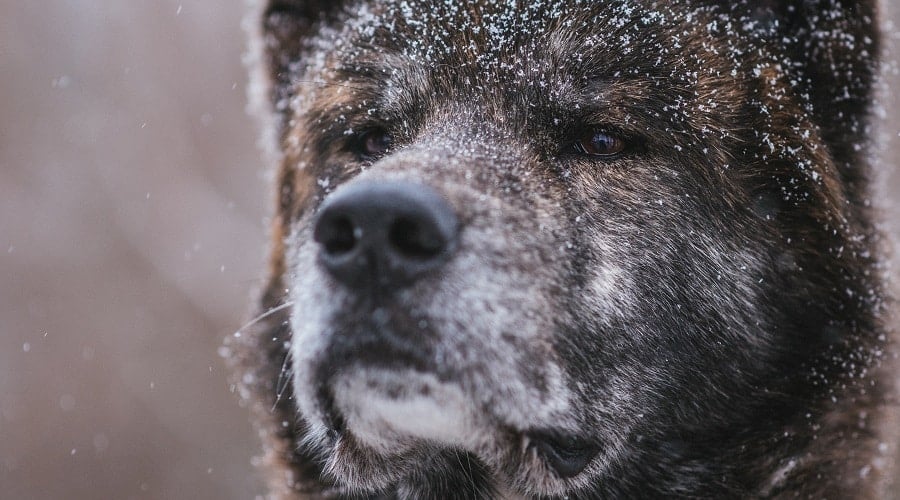
This is possibly the rarest dog on this list, and in 2015 it was believed that there were as little as 400 left, and unfortunately there is no information as to how much his numbers have dwindled since. He isn’t even recognized by the Japanese Kennel Club! What we do know of this dog is that he is confident and brave. He was originally bred to hunt wild boars on the island of Ryukyu. In the home he is calm and docile and barks little. He reaches 18 to 19 inches in height, and he sports many of the Spitz like features, such as the pointy ears and curly tail.
Because of his origins, he spent much of his time in the rainforest, and as such he has developed a unique dewclaw, which is believed to help enable him to climb trees. Because of his wild temperament, he is said to display pack like behavior, and as such if you are lucky enough to own one of these guys then you must be much stronger willed than him, otherwise, he will rule the roost!
Kai Ken
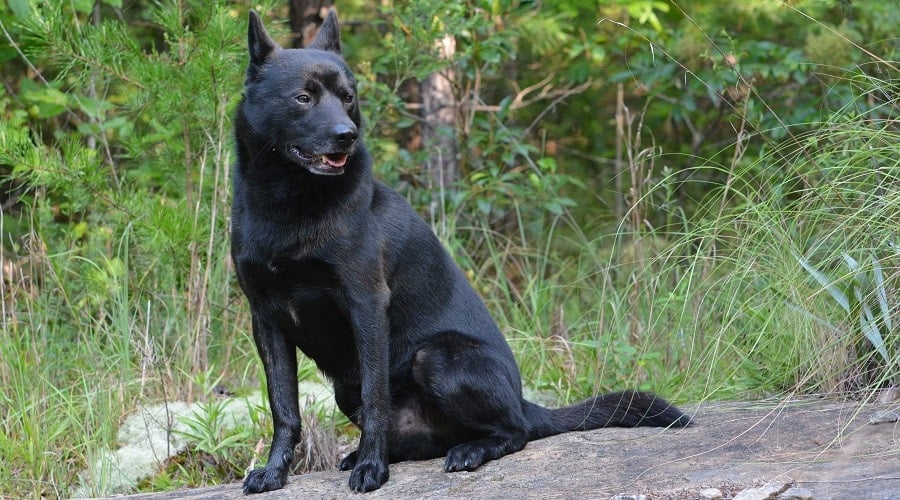
The Kai Ken is another rarer dog on this list, even in Japan. He was originally bred to hunt, but over the years he has become more accustomed to the warmth of his humans’ home, and in return he offers canine companionship and lots of affection. He is much less independent than most of the other Japanese breeds on this list, and he is more willing to please his master. He was originally used as a game hunter, and as such he has a high prey drive, he is one of the fastest on this list so he needs an enclosed yard that he cannot escape. He needs to be placed with an active family to expel his working energy.
He comes in three brindle shades, black, brown and red, which helps him to camouflage in the wild (even more reason for you not to lose him!) Most puppies are born solid black in color, and their stripes emerge as they grow older. The Kai Ken is a self-cleaning breed, and whilst that doesn’t mean he will run himself a bath, he will keep his coat in tip-top condition, so the need to bath him will be rare. He weighs anywhere between 20 and 40 pounds, and he measures between 15 ½ and 19 ½ inches in height.
Kishu Ken
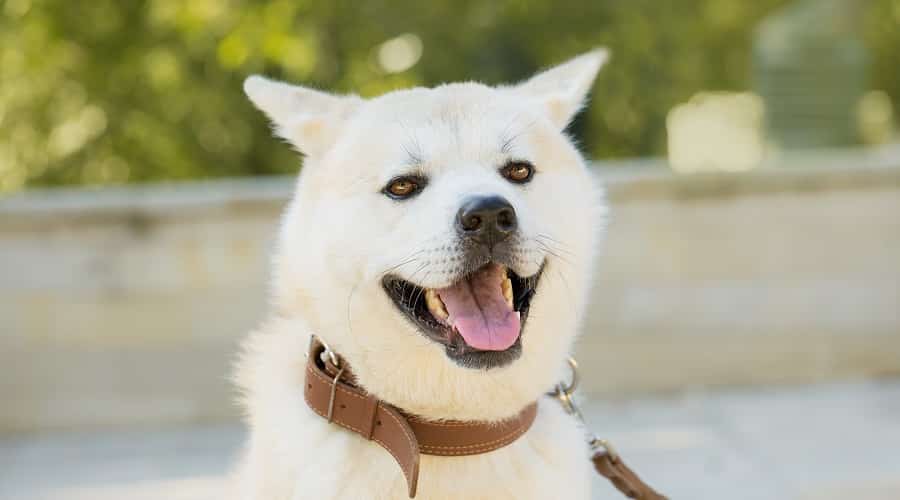
The Kishu Ken was declared a national treasure in 1934, and he is very much honored in his native country, and because of this he is rarely exported outside of Japan. He is a very active dog who needs a lot of exercise, but when his exercise needs are met, he is a happy and docile dog in the home. He is friendly with children and everyone in the family, but quite aloof with strangers and those outside the family unit. Like many dogs on this list he has a high prey drive and so he probably isn’t suited to multi-pet households with smaller rodent type animals.
The Kishu Ken measures 17 to 22 inches in height, and he weighs 30 to 60 pounds. He sports the Spitz red and sesame colors, but he is more commonly found sporting a white coat simply because hunters favored this colored due to ease of visibility when on a hunt. He has a thick double coat and is a moderate shedder. He has the smaller pointy Spitz ears, but his tail is longer and has less of a curl, unless he is alerted to something. He is a very pretty dog, but don’t mistake his power, for he was originally bred to hunt wild boar and deer.
Sanshu Inu
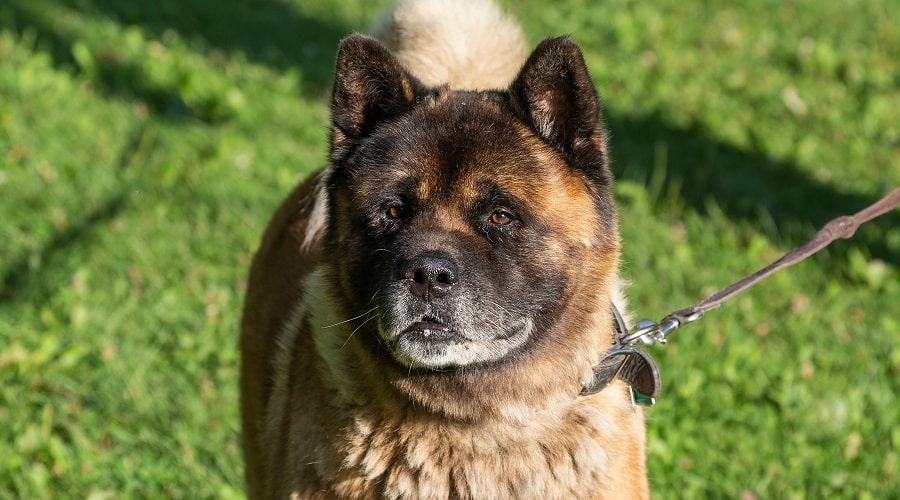
The Sanshu Inu is another relatively new breed, believed to have been developed in the early 20th Century from other undocumented Japanese dogs and the Chinese Chow Chow, which is apparent with his chunkier frame. Being quite new he is proving to be quite popular in Japan, however he is very rare in other parts of the world. He looks quite similar to the Hokkaido, so many believe that the Hokkaido is his ancestor. He was bred to be a family guard dog, and a loyal companion for the younger members of the family, so he makes an excellent family companion, and he is quite a sensitive and sweet soul.
The Sanshu Inu measures 16 to 22 inches tall, and he weighs 45 to 55 pounds. He comes in many colors, such as grey, tan, red, black, white, pied, salt and pepper, or a combination of any of those, so he is the most colorful pup on this list. Unlike the majority of the dogs on this list, he has a straight and thick tail, not the curly Catherine wheel like tails, but considering that both of his parents have curly tails no one knows where this came from!
Karafuto Ken
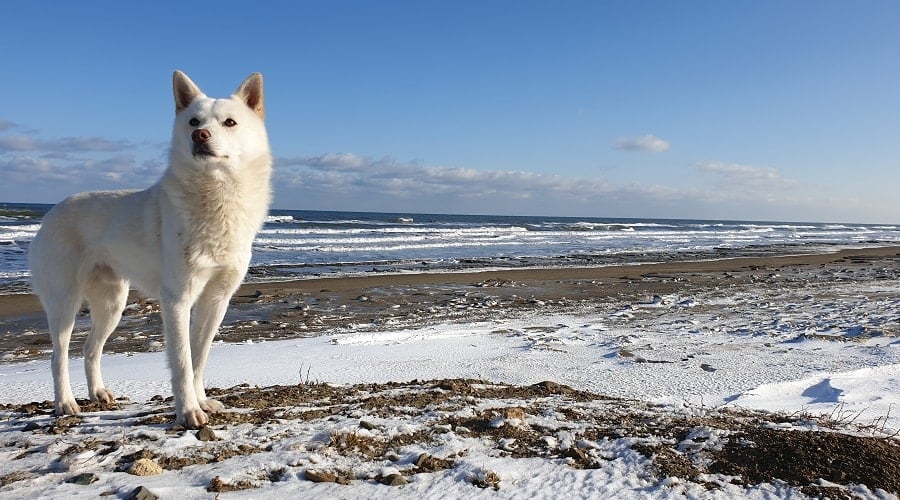
Also known as the Sakhalin Husky, it is sadly believed that they are now extinct. This pup looks somewhat like an Akita or a Siberian husky. Just before the last Karafuto Ken breeder died, he stated that the last remaining dogs, Taro and Jiro, could not be bred due to genetic similarity. An ill-fated Japanese expedition to Antarctica, unfortunately, had to make an emergency evacuation and left behind 15 of these dogs.
It wasn’t until a year later that explorers returned to the site and found that Taro and Jiro survived the year. Taro and Jira can now be found preserved in Museums in Japan, who are very much celebrated as national heroes. This sad story goes to show exactly how rare some of the Japanese dog breeds are.
Final Thoughts
Japanese dog breeds look quite similar, with their pointy triangular ears, distinctive curly tails, athletic and muscular appearance, and thick double coats. So, if you like this canine look then you have a lot of choices on this Japanese list!
Japanese dog breeds are also some of the most protective and loyal breeds on the planet, so if you are seeking a protective dog then, again, you have a lot of choices here. The majority of these guys were originally bred as hunters, so they have a protective personality and a high prey drive which needs to be considered. But despite this, they all make adorable and loving family members, so you just need to find the one that is perfect for you and your family!



